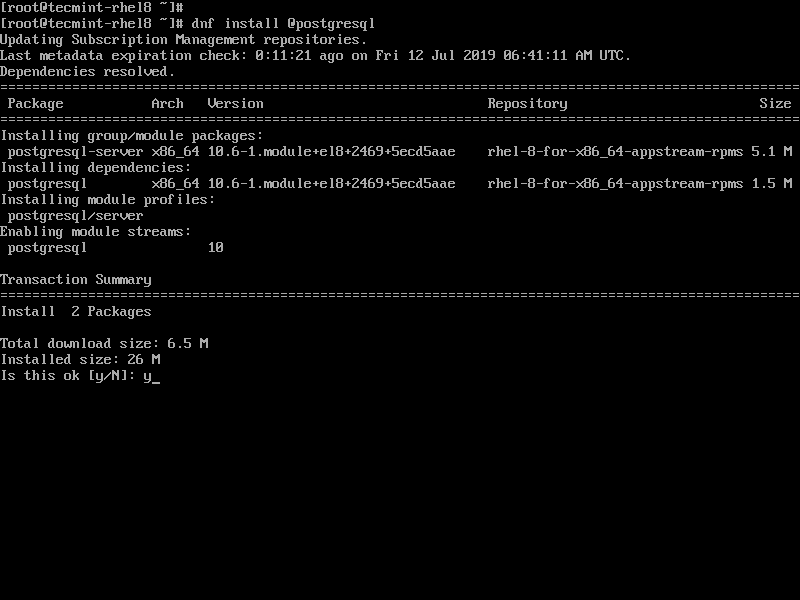


# yum module info postgresql # lists all modules for postgresqlįrom this output we can see there are several AppStreams of PostgreSQL to work with. Let's take a look at which versions, or AppStreams are available for PostgreSQL. For our demonstration we are going to use one of the PostgreSQL modules. # yum module list # lists all modulesĪs you can see there are quite a few already provided in the base installation. We can display modules using yum and see what modules and AppStreams are available to us. Installing Applications via Modulesįirst things first, let's take a look at which modules are currently available to us after a fresh installation of RHEL 8. Starting with RHEL 8, Red Hat Software Collections along with Extras, Dotnet, and Devtools will be moved into and replaced by the Appstream repository. Now users will have more choices when it comes to versions of popular languages and tools. In the past users would typically have one or two versions to work with throughout the lifecycle of the operating system. Modularity and AppStreams provide users access to newer versions of software while being supported longer. * Estimated timeline of support, for more information on life cycles please visit Red Hat Enterprise Linux 8 Application Streams Life Cycle Each module will also have installation profiles, which help to define a specific use case, and will determine which packages are installed on the system. These modules can be thought of as package groups that represent an application, a set of tools, or runtime languages.Įach of these modules can have different streams, which represent different versions of software, giving the user the option to use whichever version best suits their needs.

Red Hat Enterprise Linux 8 comes with a new feature called Application Streams (AppStreams), in which multiple versions of packages are provided, with a known period of support.


 0 kommentar(er)
0 kommentar(er)
